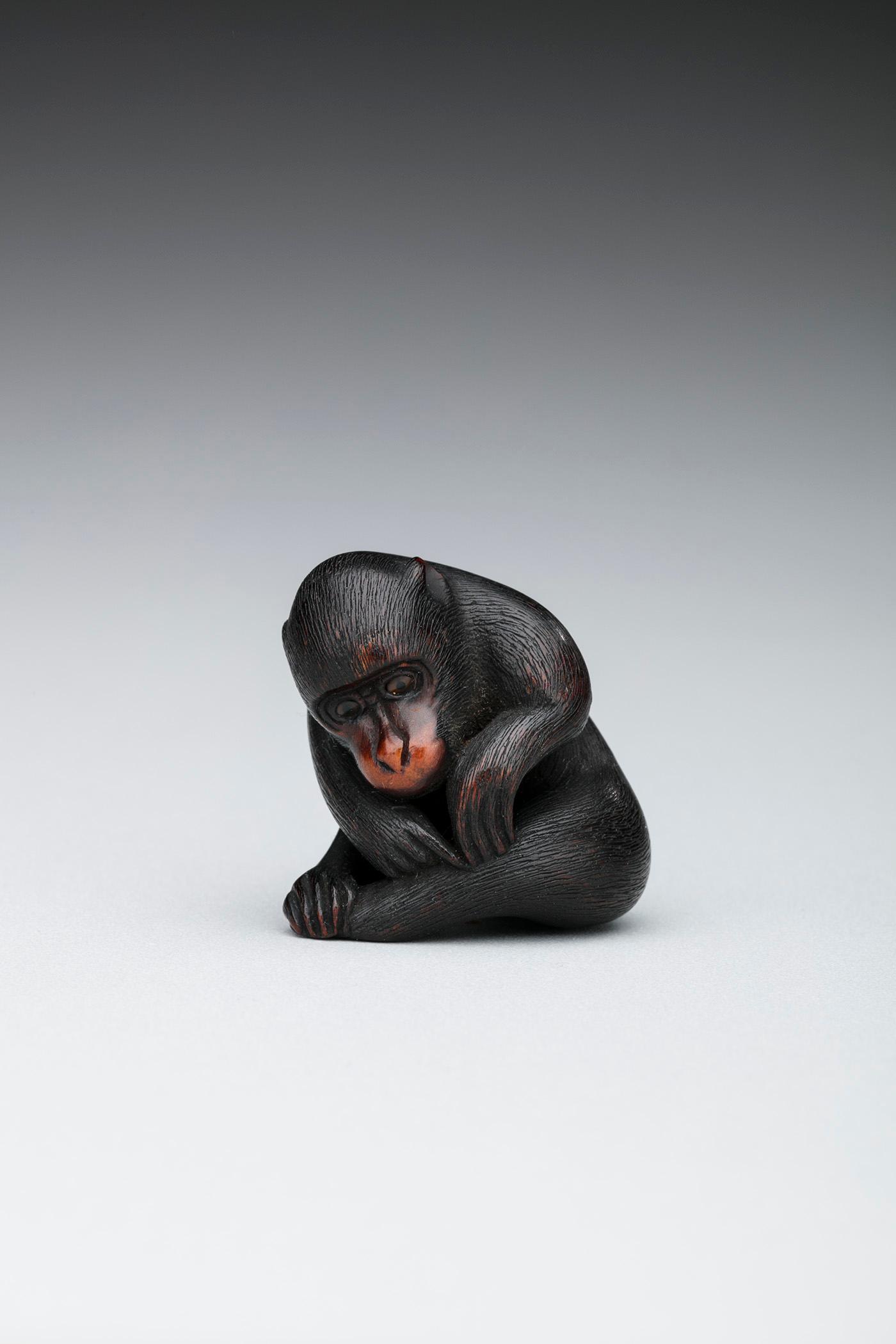Netsuke are miniature sculptures that were created in 17th-century Japan to serve a practical function. We present this one thanks to the Toledo Museum of Art.
Traditional Japanese garments—robes called kosode and kimono—had no pockets; men who wore them, however, needed a place to store their personal belongings, such as pipes, tobacco, money, seals, or medicines. Their solution was to place such objects in containers (called sagemono) hung by cords from the robes' sashes (obi). The containers may have been pouches or small woven baskets, but the most popular were beautifully crafted boxes (inrō) that were held shut by ojime, which were sliding beads on cords. Whatever the form of the container, the fastener that secured the cord at the top of the sash was a carved, button-like toggle called a netsuke.
Netsuke evolved over time from being strictly utilitarian into objects of great artistic merit and an expression of extraordinary craftsmanship.
Have you read The Hare with Amber Eyes by the British ceramist Edmund de Waal? De Waal tells the story of his family, the Ephrussi, once a very wealthy European Jewish banking dynasty. The Ephrussis lost almost everything in 1938 when the Nazis aryanized their property. Even after the war, the family failed to recover most of its extensive property, including priceless artwork, but an easily hidden collection of 264 Japanese netsuke miniature sculptures was saved, tucked away inside a mattress by Anna, a loyal maid at Palais Ephrussi in Vienna during the war years.
It is a beautiful book, one of my favorites. : )
- Zuzanna
P.S. If you look for more art-inspired books, check our great selection here. <3


 Unknown Artist
Unknown Artist